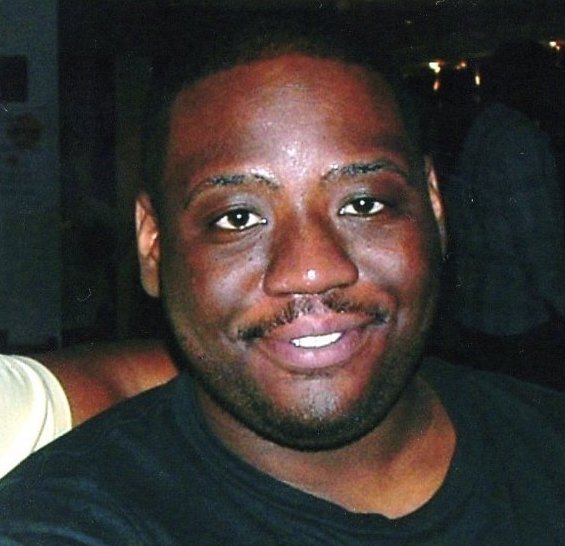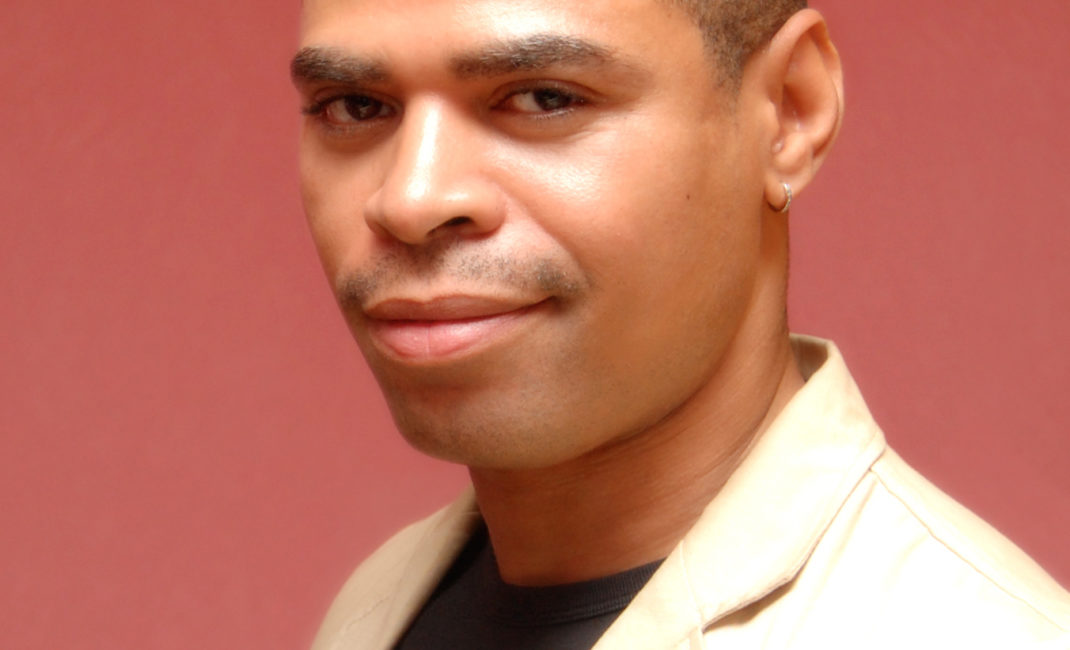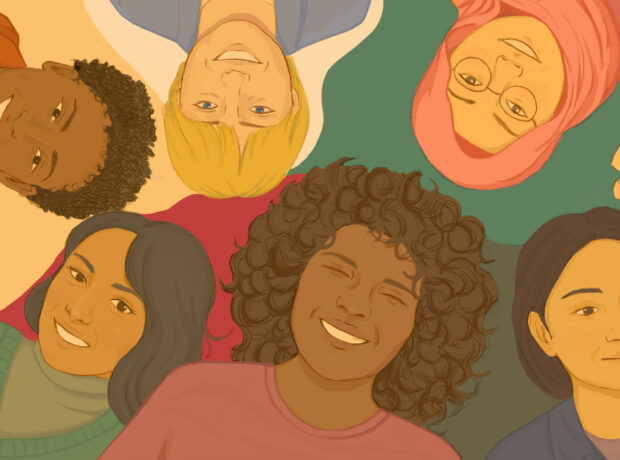Deaths in detention are at the sharp end of a continuum of racialised state harm that connects a Black British experience of structural racism, over-policing and criminalisation. Deborah Coles, executive director of INQUEST, looks back over the decades and asks why the same cycles are repeated.
Shaky security camera footage shows a man walking in and out traffic, almost playfully. At one point he skips, his expression bright and open as he walks into a corner shop. The man is Leon Briggs and the footage from 4 November 2013.
Leon’s mum has never been able to watch the footage herself but supported Channel 4’s legal battle to release the video “because I wanted the world to see how my son was treated”.
That day Leon was suffering a mental health crisis. After leaving the shop he was detained by police and restrained on the ground. Instead of taking him to a hospital, they took him to Luton police station where he was restrained again and left, face down, in a cell where he died.
No officer involved has ever faced disciplinary action or been held to account. A misconduct hearing against the officers due to begin in February failed to go ahead.
Earlier this month, an inquest into Leon’s death criticised police use of force against the 39-year-old father-of-two as “inappropriate” and said they had failed to recognise the need for medical attention and that neglect contributed to his death.
A week after the verdict from Leon’s inquest, on the evening of 19 March, news emerged of a 44-year-old man found “distressed and unwell” by police in North London. They restrained him in handcuffs. A press release from the police watchdog said the man later died in hospital.
In 2019-20, 18 people died in or following police custody, 11 of whom were identified as having “mental health concerns”. These deaths aren’t isolated incidents, they occur against a backdrop of racism, inequality and a system that is defensive towards change and learning.
For 40 years INQUEST has monitored and analysed avoidable deaths in state custody or care. We work alongside families whose loved ones have been denied a future and who through their grief fight to ensure that it doesn’t happen to anyone else. And yet it keeps happening. There are patterns that emerge from deaths in similar circumstances of prolonged and dangerous restraint. State institutions responsible fail to willingly address the harms that have occurred, fail to honestly admit what went wrong, and thus are incapable of learning.
The following statement is from the family of Thomas Orchard who was restrained by police in 2012 when in a mental health crisis, bound and gagged, his face and head covered with a heavy webbed belt, carried face down and left lying on the cell floor:
“We need to hold those responsible to account because Thomas’s life and death needs to matter. It has been truly heartbreaking to witness Thomas’s hideous end, we can only imagine how dreadfully frightening it would have been for him and we will never recover from this; we can never forget and we feel almost as much victims of this as Thomas was. But to have some good come of it, some accountability, some change in policy, some shift in police attitudes towards vulnerable people, would go some way towards our healing.”
STATE AGENTS RARELY HELD TO ACCOUNT
State agents are rarely held to account. Despite a pattern of restraint deaths where inquest juries have rejected the official version of events and found overwhelming evidence of unlawful use of force, brutality, neglect, and human rights abuses, no police or prison officer or healthcare worker has been held responsible either at an individual or a senior management level.
Despite more than 1,700 deaths in police custody and following police contact since 1990 there has never been a successful prosecution of any police officer for murder or manslaughter.
In 10 cases since 1990, murder or manslaughter charges have been brought against police officers. In all cases trials have collapsed or officers have been acquitted by the jury.
This is not, as the Police Federation told the Home Affairs Select Committee inquiry into police complaints, an example of police and state accountability. Instead, it is about a wholesale inadequacy in the legal framework to ensure accountability, prevention and change.
This is one of the most contentious issues in relation to the approach of the criminal justice system to all deaths in custody.
Bereaved families are consistently failed and traumatised by an investigation system characterised by delay, denial, deflection, and defensiveness.
At its core are concerns that the rule of law does not apply to state agents in the same way as it does to an ordinary citizen. This serves only to create a culture of impunity which frustrates the prevention of abuses of power, ill-treatment and misconduct.
STRUCTURAL RACISM
The deaths in detention that we are seeing are at the sharp end of a continuum of racialised state harm, that connects the Black community’s broader experience of structural racism, over-policing and criminalisation.
In the year 2021, it is beyond imaginable that this government and institutions want to deny structural racism is a problem. It should not be a matter of continued contention that a disproportionate number of Black people die after the use of lethal force by police and neglect by the state. Unless we acknowledge this truth, we cannot work to address it.
Use-of-force data in policing and prisons, along with disproportionate stop and search data reinforces these racial disparities. Criminal justice data is just one way that structural racism shows itself. Our work across decades with families shows us a use of racial stereotypes equating Black people with dangerousness and criminality, portraying those who have died following the use of force and restraint as ‘Big, Black and Dangerous’.
In cases where people have had mental ill health, additional negative imagery and stereotyping – ‘mad, bad and dangerous’ – has informed their treatment: we know too of the high rates of restraint used in mental health and learning disability settings, disproportionately affecting Black people, women and children.
These tropes, already woven so tightly into the mindset, culture and practice of state agents and institutions, can lead to the disproportionate and fatal use of force.
USE OF FORCE
The majority of information that has entered the public domain about restraint-related deaths has arisen only because of the deceased’s family’s and friends’ full participation in the inquest proceedings facilitated by their legal representation. In the absence of criminal prosecutions, the inquest is the only public forum in which these deaths are subject to scrutiny and where systemic failings can be exposed.
It is difficult to convey the shocking nature of evidence that comes out of inquests.
What has happened to make our systems so intolerant to vulnerability? Revealing a use of force that is greatly disproportionate to the risks posed, especially where is one person and a large number of officers.
An obsession with dangerousness and ascribing agitation and disorientation as violence means the only available focus is the risk posed by the individual rather than consideration of their basic safety.
“Our son, Seni, died because of the prolonged restraint in which he was held down by police officers while he was a patient in a mental health hospital: they held him face down, shackled with his hands in two sets of handcuffs and his legs in two sets of restraints. They held him down like that, in a prolonged restraint which they knew to be dangerous, until he went limp. And even then, instead of treating him as a medical emergency, they simply walked away, leaving Seni on the floor of a locked room, all but dead. That is how we lost our beloved son.”
Those were the words of the family of 23-year-old Olaseni ‘Seni’ Lewis in October 2017 after six Metropolitan police officers had been cleared of misconduct in relation to his death. An inquest jury had concluded only months before that: “excessive force” and “multiple mechanical restraints” were “disproportionate and unreasonable” and “contributed to the cause of death”.

The death of Olaseni ‘Seni’ Lewis in 2010, following restraint by the police whilst he was experiencing a mental health crisis, was a catalyst for the review. [credit: family]
The pernicious combination of such perceptions towards people of colour and those with mental illness create situations where the person being restrained is dehumanised, their life devalued. The frequency of comments made at inquests about the ‘superhuman strength’ of individuals being restrained shields the people involved in a death, who are perhaps afraid or unwilling to recognise that the person who died, at their hands, was extremely unwell, in a state of crisis and highly vulnerable.
Rather than working to get alongside the person in distress, what is demanded of them is compliance. Sometimes to the point where eventually struggling ceases, a compliance that is never given, but forcefully taken along with their last breath, and whole future.
When a person subject to violence reacts, their pain and distress is met with derision and disbelief. As Christopher Alder was left lying face down on the floor of a police station, officers laughed and joked at his expense. This was in 1998. Similar evidence was heard at Leon Briggs’s inquest, more than 20 years later.
VERY PREVENTABLE DEATHS
Sean Rigg, Seni Lewis and Kevin Clarke were three young Black men in a mental crisis and restrained to death, all under the care of the same mental health trust and same police force. That these could occur over a period of 10 years illustrates the failure of accountability processes needed to prevent deaths. What we can say unequivocally is that had there been the learning and accountability from the deaths that came before them, their deaths might have, and indeed should have been, prevented.

The death of Sean Rigg in 2008, following restraint by the police whilst he was experiencing a mental health crisis, was a catalyst for the review. [credit: family]
In 1999 Roger Sylvester, a Black man in a mental health crisis, died after being restrained by eight police officers. His family faced a long and hard fight for justice. The inquest into his death eventually concluded in October 2003, with the jury finding that the restraint was the cause of his death and that he was unlawfully killed (subsequently challenged by police).
The coroner in Roger’s case then produced a Preventing Future Deaths report, 59 pages long, with 10 recommendations for the police and mental health services.
After significant publicity surrounding Roger’s inquest, police forces became increasingly aware of the issues of acute behavioural disturbance (ABD) and positional asphyxia. There was another review into mental health and restraint by the Metropolitan Police Service in 2004 making another 26 recommendations, reiterating that if officers restrain a person who is having a mental health crisis, that person may die.
Training and guidance were adopted. This has been reiterated in other views and reports, not least by Dame Elish Angiolini’s independent review into deaths and serious incidents in police custody in England and Wales. This landmark review, published in October 2017, was seen as a blueprint for change — in the police service, health service and justice systems — that would save lives. But change has not come and preventable deaths keep on happening.
In October 2020 the inquest concluded into the death of Kevin Clarke. In their narrative conclusion the jury described Mr Clarke as a kind, gentle and well-liked person, known as a “gentle giant” by his friends and family. When he died, he was having a mental health crisis and was showing classic symptoms of ABD, such as those described earlier.
He was compliant and confused. In need of care and protection. Despite this, police officers took the decision to restrain him, while the ambulance crew failed to carry out a proper clinical assessment. Significantly, the jury found that the restraint used by the officers was inappropriate, and that it contributed to his death.
And – just like George Floyd, and so many others – Kevin Clarke was heard to say “I can’t breathe” while he was being restrained. The jury also found that opportunities for earlier, less restricted intervention were missed by the mental health trust. Nearly identical findings of the jury at Sean Rigg’s inquest.
In short, the same thing keeps happening. We have known about this problem since the 1990s, and yet people are still dying.
SO WHAT IS STOPPING MUCH-NEEDED CHANGE?
At INQUEST we’re concerned that whilst shocking and contentious cases or critical reports may generate an immediate response and commitment to change and learning, it is not sustained and doesn’t become embedded in culture, approach and practice. We worry that impetus and momentum is lost with the risk that the same cycles are repeated.
This is a public health and social justice issue.
Ultimately this is about the need to end the reliance on police as the first responders to mental health emergencies. Police are not and never will be mental health specialists. It is not their function and does them a disservice to be mopping up lack of public health resourcing.
The government has announced 20,000 more police officers. Why not redirect some of this money to establishing 24/7 mental health emergency response units? This service would not be made up of police officers – it would be populated by social workers, psychiatric nurses and other professionals with appropriate skillsets. And it would focus on getting people the treatment and help they need, rather than focusing on arrest and criminalisation. Projects like this are currently being trialled in multiple US cities.
Such a service, if properly funded and resourced, staffed with appropriately trained and caring staff, could save lives.
We also need to avoid people getting into crisis. Why is there always more funding found for increased police weaponry and more police officers but not crisis cafes, safe havens, and crisis houses, and culturally-specific community mental health services?
This is about radical transformative structural change to prioritise people’s needs and invest in communities. It’s about rethinking how we address societal harms and racial and social inequalities – the very structural inequalities brought into stark relief by the pandemic and those who have died.
These are conversations energised by the Black Lives Matter protests and the campaigns of bereaved people. It is about how we think about safety in the 21st century and, rather than focusing on expanding the remit and resourcing of policing/prisons and coercive practices, we should invest in services that prioritise harm reduction; drug, alcohol, and mental health services; youth clubs and youth services; affordable housing; jobs; addressing poverty and inequality.
Marcia Rigg has been a formidable campaigner since her brother Sean Rigg, a 44 year old musician and music producer, died after multiple failures and unsuitable and prolonged restraint by officers at Brixton police station in 2008. Ahead of the annual memorial event of the United Friends and Families Campaign in October 2020, Marcia said:
“We have to cling onto hope otherwise they’ve won indefinitely and that cannot be right because the evidence is so compelling. It’s traumatising for any family and I don’t think that ever goes away. We understand that our loved ones will never come back. What we want is for it to not happen to another family. What we want is really effective change.”
Deborah Coles is the executive director of leading human rights charity INQUEST.
Rebecca Omonira-Oyekanmi of Shine A Light created this edited version of Deborah Coles’s contribution to Professor Leslie Thomas QC’s lecture “Restraining Police Restraint” that was delivered on 4 March 2021, and is available to view online here.
This is part of Professor Thomas’s six-part Gresham College lecture series, “Death,The State and Human Rights”.
Main Image by Aswin Deth
Read More:



